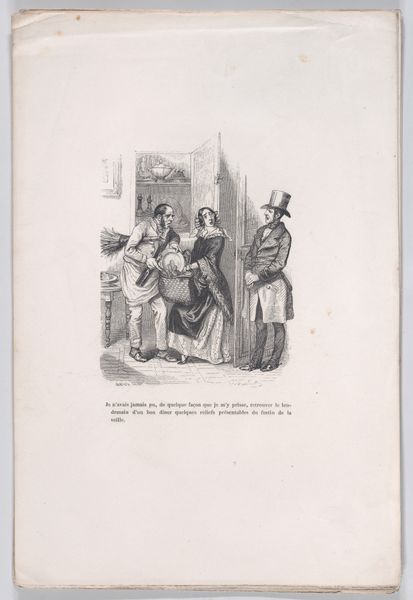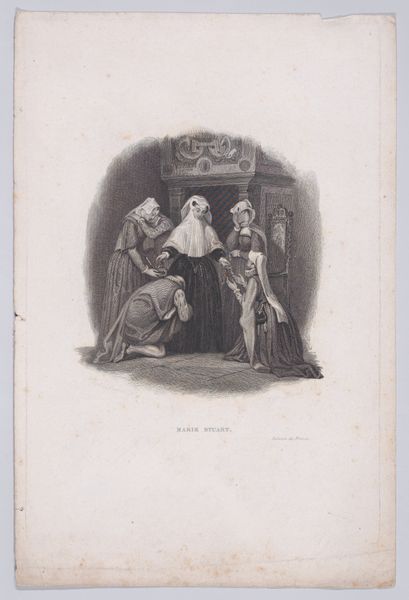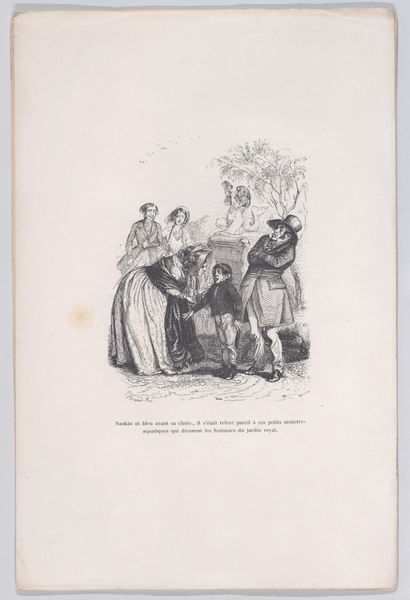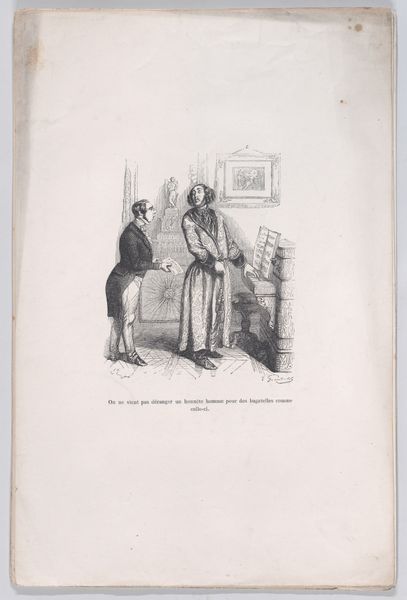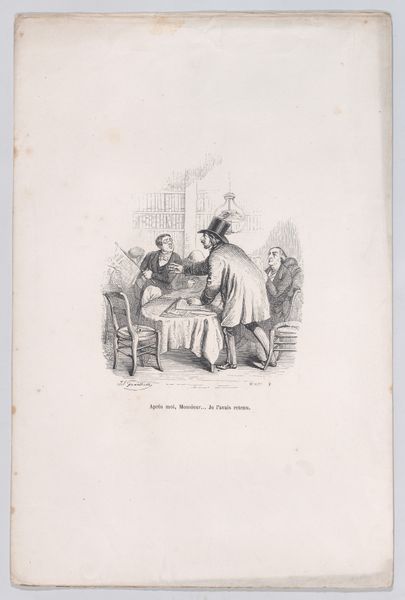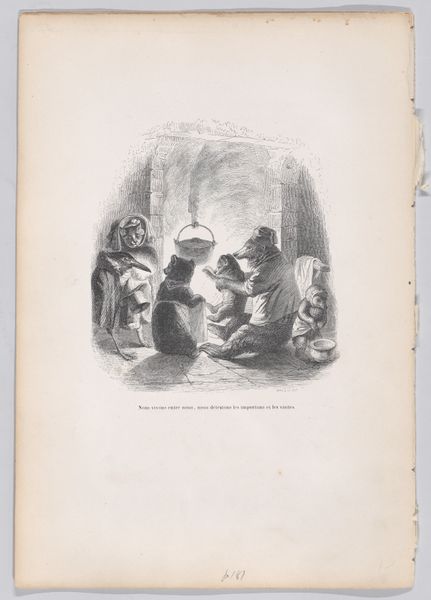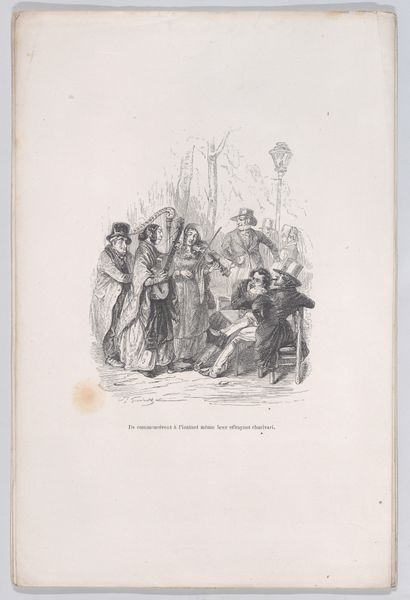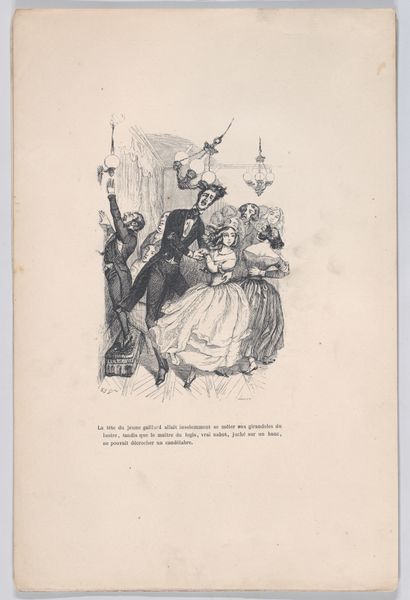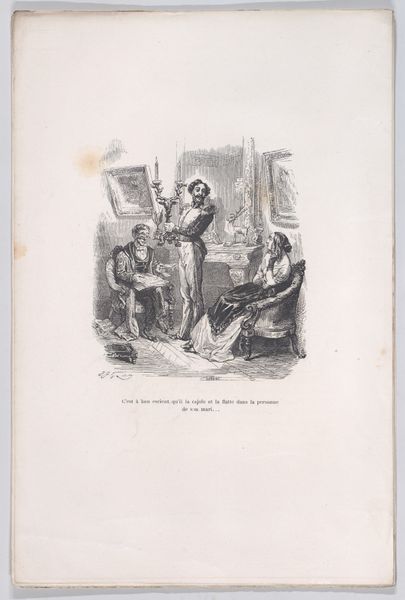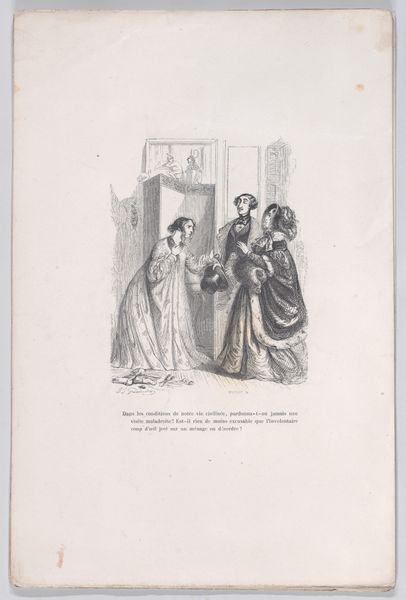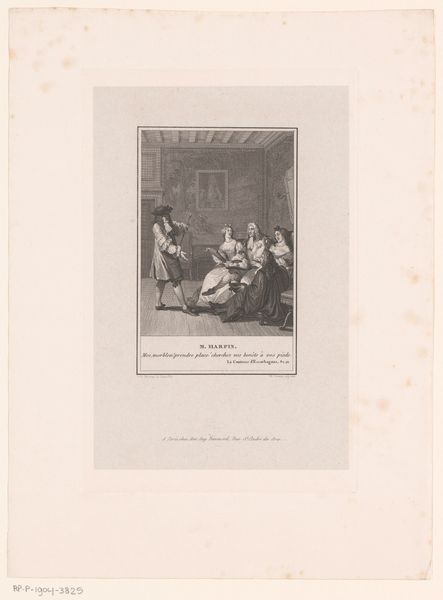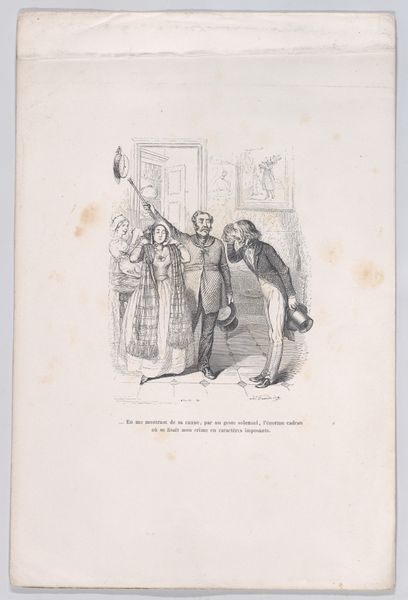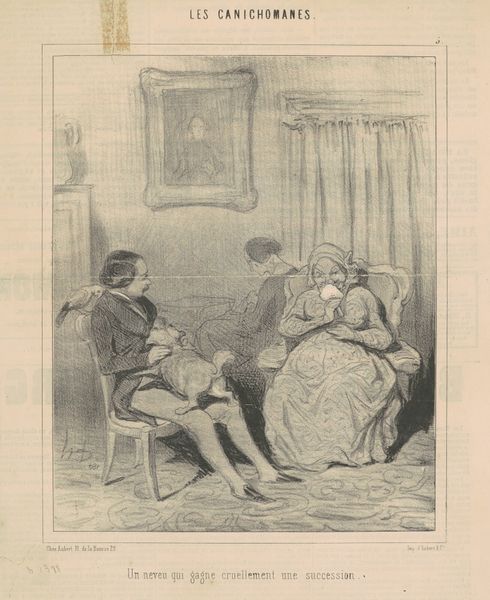
"The grieving widow gives them both the right to do well.... And they both retain an eternal grudge with each other." from the Little Miseries of Human Life 1843
0:00
0:00
drawing, print, etching, engraving
#
drawing
#
narrative-art
# print
#
etching
#
caricature
#
figuration
#
romanticism
#
men
#
genre-painting
#
engraving
Dimensions: Sheet: 11 1/4 × 7 1/2 in. (28.5 × 19 cm)
Copyright: Public Domain
Editor: Here we have J.J. Grandville's etching, "The grieving widow gives them both the right to do well.... And they both retain an eternal grudge with each other.", made in 1843. It looks like a humorous narrative scene, but I'm not quite sure what's going on. What do you see in this print? Curator: Well, on the surface, it presents a bourgeois interior and three figures in negotiation, but I'm struck by how it critiques social conventions surrounding marriage and wealth in 19th-century France. Given the title, it appears to be about inheritance and conflict. Note the presence of legal paperwork and a will. Grandville cleverly uses caricature to point out the avarice and petty squabbles masked by grief. Editor: So, it's about more than just a squabble? Is Grandville making a broader statement? Curator: Absolutely. Think about the socio-political context: The July Monarchy, the rise of the bourgeoisie, and increased anxieties surrounding wealth and status. Grandville uses these "little miseries" to comment on the moral compromises and hypocrisy embedded within the societal structure of the era. What do you notice about the body language? Editor: Everyone seems rather tense. The grieving widow doesn't seem *that* sad, now that you mention it! Almost… calculating? And the men seem very focused on something other than mourning. Curator: Precisely! The artist is employing dark humor to lay bare uncomfortable truths about social relationships. These prints like these gained popularity through mass media like illustrated periodicals, thus actively shaped the cultural landscape by inviting widespread criticism. Grandville understood how to work with images to stir public debates and commentary. Editor: This definitely makes me think differently about it! I initially saw just a funny scene, but now it seems like pointed social commentary. Curator: It's a reminder that art can often reflect and shape the political climate of its time, making us reconsider the assumptions and power structures embedded within the artwork.
Comments
No comments
Be the first to comment and join the conversation on the ultimate creative platform.

